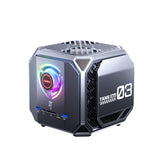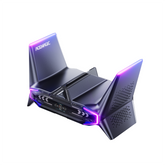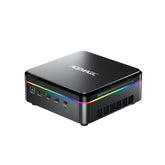How long do PCs last? A comprehensive guide to the lifespan of computers
Personal computers are indispensable for work, entertainment and everyday tasks. But no device lasts forever. If you know the typical lifespan of different PCs and the influencing factors, you can plan upgrades better, avoid unexpected failures and maximize the value of your investment. This guide explains average useful life, key components, wear signs and maintenance tips.

Average lifespan of different PC types
Different PC types have different durability profiles due to construction, use and upgrade options.
Desktop PCs: 5–7 years
Desktop PCs often survive other devices thanks to better cooling, more robust components and easier upgrades. With good care and occasional partial replacement, many can run reliably for over 7 years.
Laptops: 3–5 years
Laptops usually have a shorter lifespan due to compact design, heat build-up and limited upgrade options. Battery wear is often the first serious problem.
Mini-PCs: 4–6 years
Mini-PCs combine portability with performance. Their lifespan depends heavily on cooling efficiency and workload.
| PC Type | Average Lifespan | Common Limiting Factors |
|---|---|---|
| Desktop | 5–7 years | Outdated components, PSU wear |
| Laptop | 3–5 years | Battery degradation, heat |
| Mini PC | 4–6 years | Cooling limits, compact space |

Main factors for the lifespan of a PC
The service life of a PC is significantly determined by physical conditions, usage behavior, component quality, software requirements and maintenance routines. A systematic analysis of these factors enables preventive measures and sensible upgrade decisions.
Environmental influences
Environmental conditions are one of the most common causes of premature hardware wear.
- Temperature: permanent load above 176 °F (CPU/GPU) accelerates material fatigue. For example, for months of operation at 194 °F reduces the expected CPU life life by up to 30%.
- Air humidity: Values over 60% favor corrosion on circuit boards and connectors.
- Dust Accumulation: Dust buildup blocks airflow, leading to overheating and higher fan speeds, which strain bearings and capacitors.
- Physical Impact: Even a fall from table height can break soldering points or damage hard drives.
Recommendation: Devices in ventilated, dry environments operate without direct heat sources.
Usage profile and utilization
The workload determines the degree of wear directly.
- Heavy Workloads: Continuous gaming, CAD modeling, or 4K video rendering maintains high thermal and electrical stress.
- Light Usage: Office tasks and browsing generate less heat, allowing components to last years longer.
- Operational Hours: Systems running 24/7 reach component fatigue faster than those powered down regularly.
- Peak vs. Steady Load: Frequent jumps from idle to maximum load stress thermal interfaces and solder joints.
Example: A desktop PC can last for 8+ years with a slight office use, but often needs essential component exchange under constant GPU render load after only 3–4 years.
Component quality and manufacturer
- Power supplies (PSUs): High-quality 80-plus-certified power supplies provide more stable voltage and extend the lifespan.
- Memory: Enterprise-SSDs with higher TBW rating survive consumer models for writing.
- Mainboards: Fixed capacitors and reinforced VRMs can cope with permanent load without premature failures.
- Manufacturer support: established brands offer longer guarantees and stable firmware updates.
Software updates and compatibility
Necessary for security, but with influence on the perceived useful life:
- System requirements: New OS versions often need more RAM, faster memory or CPU command rates.
- Driver EOL: Missioned driver updates reduce stability.
- Background load: Updates sometimes activate services that increase CPU/RAM utilization.
- Security patches: Older hardware can slow down additional protective layers.
Note: Always check requirements before upgrades. If performance drops, consider hardware upgrades or OS tuning.
Power supply and tension stability
A stable power supply is crucial for the lifespan of the components.
- Voltage Safety Tip: Sudden overvoltages due to unstable mains voltage can immediately damage motherboards, GPUs and storage media.
- Power failures: Unplanned shutdown leads to data corruption on storage drives and loads the power supply.
- Sub-dimensioned power supplies: A PSU with inadequate wattage forces components for operation in continuous stress.
Preventive measures: overvoltage protection or USV systems (uninterruptible power supply) minimize damage. Data situation: An IEEE study shows that voltage fluctuations over ±10% of the nominal voltage shorten the lifespan of electronic components by up to 40%.
User behavior and maintenance
Regular care extends the PC life significantly.
- Cleaning intervals: Dust removal every 6–12 months improves cooling performance.
- Thermal paste: Renewal every 2–3 years keeps CPU/GPU temperatures in the optimal area.
- Safe transport: shock-protected laptop bags or padded housing saver reduce mechanical damage.
- Data management: Regular backups prevent data loss in the event of failures and reduce the costs for data recovery.
Example: A user who cleans his PC twice a year and replaces thermal paste on time can extend the lifespan by 1–2 years.
Lifespan of Major PC Components
Wear rates vary depending on the component. The average service life of components helps to plan replacement.
| Component | Average Lifespan | Notes |
|---|---|---|
| HDD | 3–5 years | Moving parts prone to wear |
| SSD | 5–10 years | No moving parts, lifespan depends on write cycles |
| PSU | 2–5 years | Voltage fluctuations shorten life |
| Laptop Battery | 2–3 years | Capacity decreases with charge cycles |
| CPU / GPU | Variable | Often outlast usefulness unless overheating |
| RAM | ~Unlimited | Rare failures, usually replaced for upgrades |
| Cooling System | Variable | Fans and thermal paste require periodic care |
Signs for the end of the life of a PC
Performance drop and freeze
A noticeable drop in speed—longer boot times, delayed application launches, or frequent lag—often indicates aging hardware.
- Example: An HDD-based desktop taking over 2 minutes to boot may have a drive nearing mechanical failure.
- Possible Causes: Worn storage drives, insufficient RAM for modern applications, or CPU throttling due to heat.
Regular benchmarks show whether the performance continues to decrease - a clear signal for necessary upgrades.
Recommend reading:
- Why Your Computer Keeps Freezing: 12 Common Causes And Fixes
- Why Does My PC Keep Restarting? Top Causes and Fixes Explained
Common hardware defects
- Typical symptoms: constant fan noises, overheating even with low loads or repeated reading errors of the hard disk.
- Example: A fan with grinding noise after 3 years of use could have bearing damage, which leads to insufficient cooling.
System crashes and errors
- Frequent signs: Blue Screens (BSOD), sudden restarts or boot loops.
- Causes: defective RAM modules, damaged memory sectors or unstable power supply.
- Data point: According to Microsoft diagnoses, 15–20% recurring BSOD errors in older PCs are due to hardware defects.
Physical damage and wear
- Examples: broken laptop hinges, damaged connections or bent mainboard pins.
- Consequences: loose contacts, overheating or total failure when transported.
Early Warning Checklist
| Symptom | Possible Cause | Risk Level | Recommended Action |
|---|---|---|---|
| Boot time exceeds 90 seconds | Aging HDD or overloaded startup programs | Medium | Test drive health, consider SSD upgrade |
| Fan noise increases noticeably | Worn bearings or dust buildup | Medium | Clean or replace fan |
| BSOD appears more than twice a month | RAM or storage failure | High | Run memory diagnostics, check SMART data |
| Laptop battery drains in under 1 hr | Battery cell degradation | High | Replace battery |
| Visible case cracks or loose ports | Structural wear | Medium | Repair or replace affected parts |
| Sudden shutdowns during workload | PSU instability or overheating | High | Test power supply, check cooling system |
When should you replace your PC?
Cost-benefit analysis
If repair costs for example reach half of the new price, an exchange is usually more sensible.
Compatibility with new software
If the PC can no longer run current operating systems or important programs, an upgrade is advisable.
Repair costs vs. New price
Common hardware defects often make further repairs uneconomical.
Loss of productivity
Extreme slowdowns that hinder the flow of work justify the purchase of a new system.
How to extend the lifespan of your PC: practical tips
- Cleaning: Dust-free components improve cooling.
- Software maintenance: Uninstall unnecessary programs, optimize autostart.
- Cooling: insert cooling pads, additional fans or new heat conductor paste.
- Gentle handling (laptops): Avoid mechanical damage.
- Updates: Install the operating system and safety patches regularly.
- Backups: Secure important data externally or in the cloud.
Recommend reading:
How to Maintain and Extend the Lifespan of Your Mini PC

Comparison: Desktop vs Laptop vs Mini PC Lifespan and Maintenance
| Feature | Desktop PC | Laptop | Mini PC |
|---|---|---|---|
| Average Lifespan | 5–7 years | 3–5 years | 4–6 years |
| Cooling | High efficiency | Moderate | Limited |
| Upgrade Potential | High | Low | Moderate |
| Maintenance | Easy | Moderate | Moderate–Hard |
If you are planning to replace your PC, you can check out our comparison article to help you make a more suitable choice.
Manufacturer guarantee and support (example: ACEMAGIC mini-PCs)
All products purchased from the official ACEMAGIC store come with a two-year warranty, covering replacements for manufacturing defects at no additional cost. This protection helps you avoid costly repairs, maintain peak performance, and ultimately extend the usable life of your device. For full terms, please refer to ACEMAGIC’s official warranty policy.
FAQ: Frequent questions about PC lifespan
How long does a PC last average?
Desktops: 5–7 years, laptops: 3–5 years, mini-PCs: 4–6 years.
What shortens the lifespan the most?
Overheating, permanent load, cheap hardware and physical damage.
Do software updates affect durability?
Yes - higher system requirements can overload older hardware.
How often should I clean my PC?
Desktops: every 6–12 months, laptops in a dusty environment: every 3–6 months.
Is it better to repair or replace an aging computer?
If repair costs exceed half the price of a new device, replacement is more cost-effective.
Do laptops keep shorter than desktop?
Yes, especially because of limited cooling and not interchangeable parts.
How do I recognize that my PC has to be replaced?
Crashes, extreme slowness and incompatibility with required software.
How do I protect my PC from overheating?
Use cooling solutions, keep the ventilation slots freely, clean components regularly.






